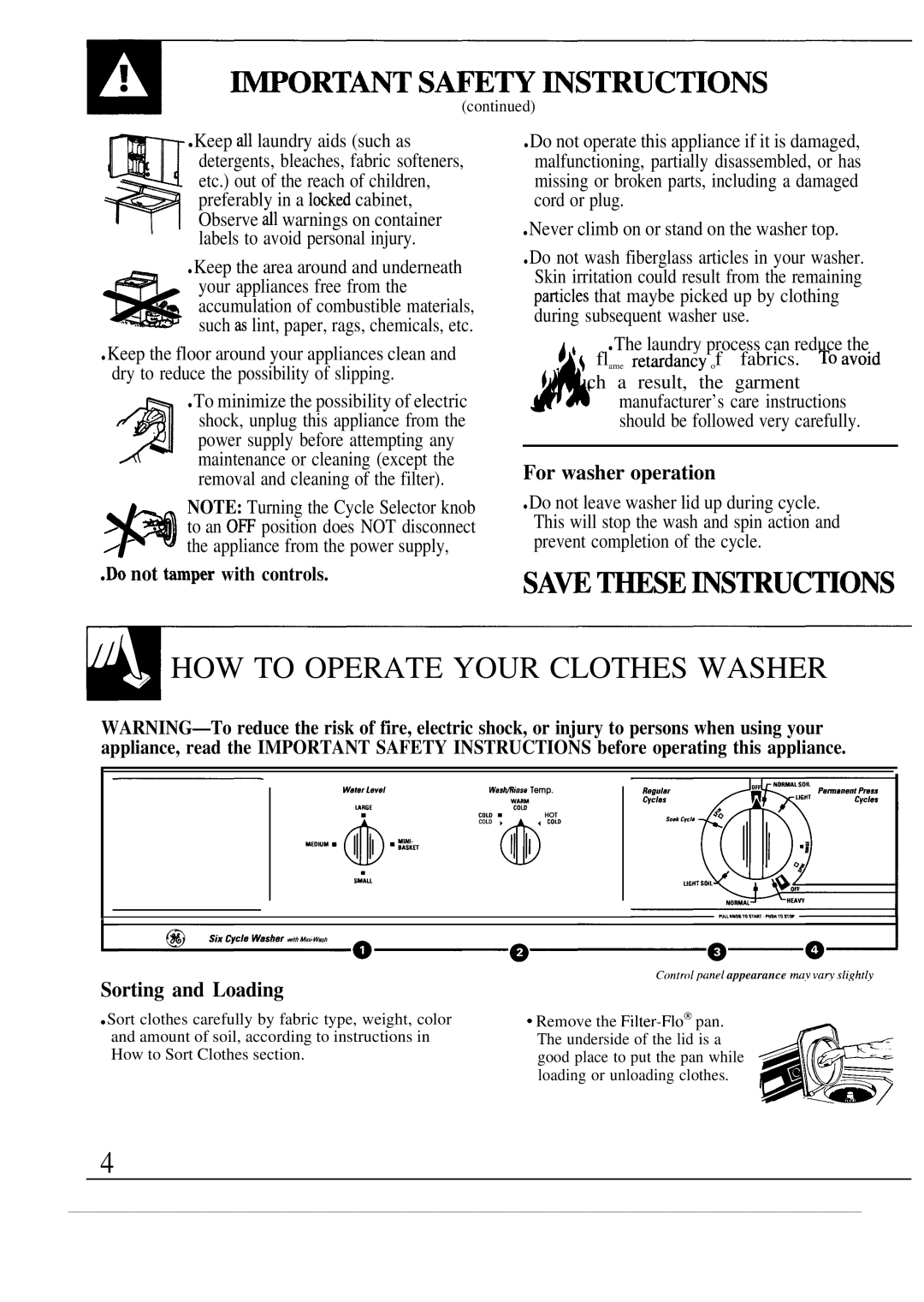
WORTANT S~E~ ~STRUCTIONS
(continued)
●Keep dl laundry aids (such as detergents, bleaches, fabric softeners, etc.) out of the reach of children, preferably in a lwked cabinet, Observe dl warnings on container labels to avoid personal injury.
●Keep the area around and underneath
*your appliances free from the accumulation of combustible materials,
u,. . such w lint, paper, rags, chemicals, etc.
● Keep the floor around your appliances clean and dry to reduce the possibility of slipping.
| ● To minimize the possibility of electric |
| shock, unplug this appliance from the |
| power supply before attempting any |
| maintenance or cleaning (except the |
| removal and cleaning of the filter). |
. | NOTE: Turning the Cycle Selector knob |
to an 0~ position does NOT disconnect | |
/“ | the appliance from the power supply, |
* |
|
● ~ not tnm~r with controls.
●Do not operate this appliance if it is damaged, malfunctioning, partially disassembled, or has missing or broken parts, including a damaged cord or plug.
●Never climb on or stand on the washer top.
●Do not wash fiberglass articles in your washer. Skin irritation could result from the remaining pafiicles that maybe picked up by clothing during subsequent washer use.
●The laundry process can reduce the
~‘~ flame retfldancy of fabrics. TO avoid
f / such a result, the garment
Amanufacturer’s care instructions should be followed very carefully.
For washer operation
●Do not leave washer lid up during cycle. This will stop the wash and spin action and prevent completion of the cycle.
HOW TO OPERATE YOUR CLOTHES WASHER
WasMInse Temp.
| ~~ |
COLD 9 | HOT |
COLD . | . COM |
II 11
@
Ccmtrt)[panei appearance ma.v vaq .Tlightly
Sorting and Loading
●Sort clothes carefully by fabric type, weight, color and amount of soil, according to instructions in How to Sort Clothes section.
“Remove the
4
